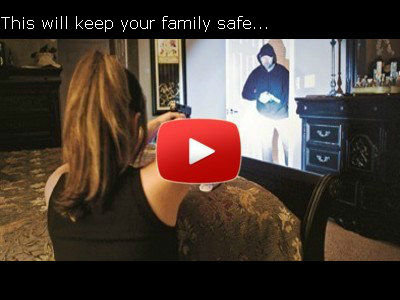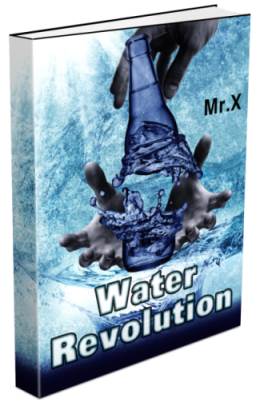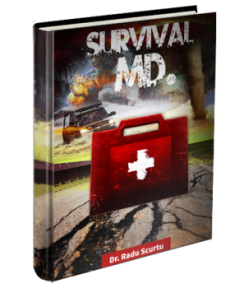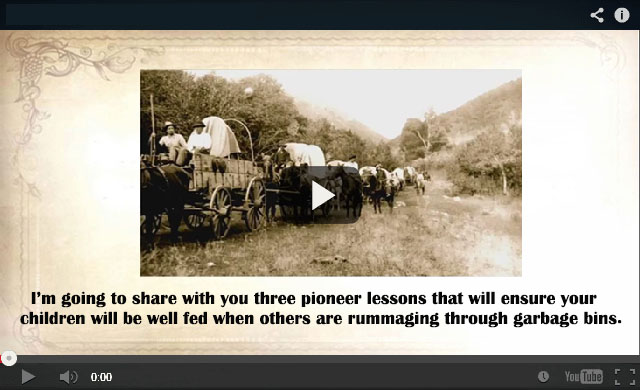The Top 10 Survival Gear … When All Hell Breaks Loose
Essential survival gear that can make the difference between life and death … includes new cutting edge gear and tools that aid in fire, food, water, self-defense, security, stealth and a lot more.
When it comes to the best survival gear, fire, food, water, and shelter are top priorities. In our list of the top 10 survival gear products we’ve chosen tools that aid in fire, food, water, self-defense, security, stealth and shelter building.
At the same time, buying survival gear shouldn’t cost you a lot of money. Early Native Americans and other primitive cultures in the world survived without expensive sporting goods and outfitters, the REI’s and Cabelas.
We live in the modern age though — in many ways we have an advantage. Most people need those advantages because going from a wired world to the wilderness comes with a learning curve — one that can kill you if you’re not prepared.
Assuming the Worst – A Disaster Strikes
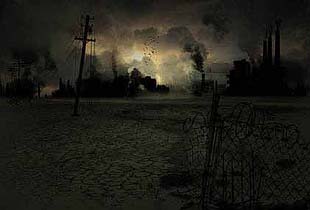
Each of these products assumes the worst — because that’s exactly when your life might be on the line and a product’s effectiveness and “Survival Power” come into play.
Fire: You want a fire when it’s cold and raining or you’ve just had to wade across a river or through flood waters and now you’re soaked and in danger of hypothermia. We recommend survival gear that can produce a rolling fire in no time and with little work.
Water: Though boiling and distilling are methods for safe drinking water, you can’t always rely on these methods, especially if you’re in a hurry and have to get out of a dangerous area or through hostile territory. You are going to want a way to quickly filter water and make it safe to drink.
Food: Freeze-dried food may fail you, especially if someone robs you for whatever food you have. A good survivalist will always have a “plan B” for feeding yourself and your family. Two products listed below will help you do just that. (Hint: These products make hunting easier, especially for beginners).
Shelter: Shelter-building is one of the first things a person will learn in survival — I make two recommendations for survival gear here, one might surprise you at the low cost involved.
Defense / Security: The wilderness can be a dangerous place; so can the streets of a major city following a widespread disaster. This list of top 10 survival gear includes products for defense and security.
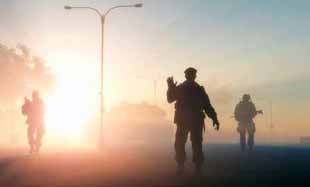
Stealth: Sometimes you may not want to be found. Other times you may want to spot other people or wildlife before they know you’re there.
The Top 10 Survival Products When You Need a Fire
1) Blazer Big Shot Butane Torch – Blazer Big Shot Butane Torch –
In this scenario, it’s not enough to just recommend a good lighter — what you need in this case is actually a proven fire starter — something that will help you get a fire going fast if you’re in an emergency that may end shortly in death by hypothermia.
For possible wet or cold weather conditions, start packing a butane torch with a flame that maxes out at 2500 degrees with 35 minutes of continuous burn time.
Let’s do the math: At 2500 degrees, you should be able to ignite your tinder bundle and start a fire within just a few seconds. With 35 minutes of continuous burn time, that means you should be able to start approximately 150 – 200 emergency fires with just one small bottle of butane fuel.
Easily refills with a standard butane canister.
Easy to light “trigger” mechanism: No need for a lighter or matches to light it. It lights itself when you pull the trigger.
NOTE — A “micro torch” isn’t a tool commonly touted by survivalists. But we live in the modern age — there’s no reason we can’t use modern tools. The Special Forces use a number of modern tools, as do professional explorers who climb the highest peaks, sail the largest oceans, and others who dive to the ocean floor. Besides — do you really want to count on a primitive bow drill or flint and steel coming through for you in an emergency? REMEMBER — this is an emergency we’re talking about. High winds. Heavy rain. Flooding. Etc.
If you wade through a cold river (rivers are common in many wilderness areas), or find yourself suddenly in the rain and need to get a fire going quickly — get this fire going using a micro torch. You can even cook, right from the torch.
Survival Power: A micro torch can be an ongoing way to get a fire going fast. Saving time on fire starting is an asset if you are traveling by foot or even by boat (canoe, kayak, Zodiac, etc.)
NOTE — A micro torch relies on fuel; when your fuel runs out, you have no more flame. You need back-up fuel (butane in this case) if you want several month’s use in an extended survival situation. One thing to note: A canister of butane is cheap and just one can go a long ways and is also easy to use). Consider both back-up butane and even a back up torch in case of rare equipment failure (or to even use as a bartering item; there’s a good chance someone else is going to want one after they see how easy it is to start a fire).
When You Need Water
2) Portable Water Filter – Lifestraw Personal Water Filter –
There are a lot of portable water filters on the market. A popular brand can do a good job filtering water and withstand long term use, but they can be both clunky and expensive, well over $100, with several parts that need to be fitted together.
Then there’s the Lifestraw Portable Water Filter that comes in at just under $22; it’s not only a great portable water filter with a proven track record, it’s a Time Magazine Invention of the Year Winner on top of that. It’s been used by both backpackers and relief agencies in third world countries alike. It weighs only 2 ounces and is a perfect tool for extreme survival situations like wilderness survival as well as a tool for providing water safe to drink during an evacuation of a widespread disaster. It has a very simple construction with no moving parts — which means less chances of equipment breakdown.
Like other portable water filters though it has it’s limits — a Lifestraw can’t filter salt (to filter salt water you’ll have to distil it) or heavy metals, chemicals or viruses. In a survival situation or urban disaster you’ll have to use your head. Avoid drinking from ground water sources in a populated area following severe flooding or a massive earthquake. This ground water can be contaminated with chemicals and sewage. You’ll want to move further out of the area to a water source that is less likely to be contaminated with chemicals and sewage before using your Lifestraw.
At 1,000 liters, you’ll get a lot of drinking water out of your “Lifestraw personal water filter”.
Survival Power: Portable water filters do not remove chemicals and so none are a complete solution to water. Outside of a city following a collapse local water sources may be contaminated with any number of chemicals as industrial run-off leeches into ground water, making this water unsafe to drink, even with a water filter. In a wilderness setting though, a Lifestraw should do just fine for you, and be a real life saver.
Tip: Have one Lifestraw for each person in your party so that you are not having to limit daily water use to small rations.
When You Need Food
3) Hunting Rifle — Marlin 336XLR –
When choosing what rifle to recommend as one of the choices for Top 10 Survival Gear, I went to the experts at Outdoor Life. They know the hunting industry. They know guns. I have to say that the “Marlin 336XLR” comes in as a great choice for a hunting rifle specifically due to it’s accuracy. New hunters need as much help as they can get right? This “30-30” gets top billing for deer but in all actuality a 30.30. can take down just about any game animal in North America, including grizzly bears. Carry the right ammunition for the game you plan to hunt; don’t use the same ammo you would use to take down a deer (150 grain) as you would for a turkey or small game (100-125 grain). Cover all your bases and carry multiple sizes of ammo.
Survival Power: Though a Marlin 336XLR comes at a higher price, this rifle is suggested for people who haven’t spent a lot of time on a gun range — and again that is due to it’s higher accuracy, requiring less marksmanship skills to get your aim correct. There are rifles that do come in at a lot less cost; but with these rifles a lot more time should be spent learning how to shoot with a scope so that you can correctly hit your target.
Tip: There is no guarantee you’ll be in an area prime for hunting — not unless you do your research first and know where to enter the wilderness so that your journey takes you through remote areas where game is plentiful.
Following a collapse, expect a lot of people in outlying towns to significantly increase the “hunting pressure” in adjacent wilderness areas within the first few days. That means much of the local wildlife is likely to flee for more remote areas due to this sudden increase in hunting pressure. Study your maps and consider starting your wilderness journey in a remote area less likely to have any human activity — which means you may have to go several more miles than you may have initially considered. But the payoff for traveling a few extra miles to start your push into the wilderness will likely be worth it — hunting is likely to be best in remote areas with little or no human activity.
To keep “hunting pressure” to a minimum, consider bow hunting due to the fact that gun shots can spook wildlife. The draw back to hunting with a bow is that bow hunting requires a lot of time learning how to shoot correctly — but it can be done and may be well worth the effort in the end for long term survival.
4) Snare Traps — Dakota Line’s Ghost Rider Versatile Snares –
One of the things a person will learn in U.S. Special Forces survival training is that squirrels, rabbits, and other small mammals can make a quick meal. In the wilderness, all you need to know is how to read the ground around you and recognize areas that small mammals are likely to travel. Then set up a number of small, simple traps around the area (dead falls, snares, etc) and simply wait for traps to spring.
Tips: You can increase the likely hood of a trap catching an animal by arranging logs, brush and large rocks to narrow a path that leads straight into each trap you set — from both directions in fact. Squirrels and rabbits and other small mammals can be “funneled” into any trap that’s been set.
If you bait these traps you have greater chances of not only catching an animal, but catching it faster than if you didn’t bait these traps. How would you like to check your traps the next morning and find a few animals snared, not just one (if you were lucky to get even one)? (Kaytee Squirrel and Critter Blend provides natural bait for an “urban survival” or “live off the land” scenario).
Survival Power: Snare placement can be a key factor to whether or not you catch anything; your ability to know where to set snares relies on you learning and practicing basic trapping skills for capturing small game. Baiting traps with common game foods like nuts, seeds, and berries (and artificial baits) can help boost your snaring success.
When You Need a Knife
5) Survival Knife — KA-BAR Full Size US Marine Corps Fighting Knife –
Let’s face it: This is a survival knife for a worst case scenario and you find yourself living in a lawless land and need a serious knife for self defense. The US Marine KA-BAR is designed for combat — and proven in combat — and carried by many U.S. Marines into past wars. Please note: This isn’t a survival knife for a weekend recreationist; a forest service official or fish and game warden will possibly confiscate it if they know you’re carrying it, so be sure to check local laws before simply packing one into the wilderness on your next backpacking trip. The good news about carrying this for a worst case survival scenario? Not only is it a knife proven in combat but something you can also use to gut big game or filet a squirrel, possom, trout, salmon or any other critter that you’re willing to eat to survive. (If this KA-BAR is a bit too military for your tastes go with a good folding knife like this Kershaw as a more civilian option and one you might buy for your teen kids as well.)
When You Need to Navigate an Urban Environment
6) Multi-Tool –
Reaching for a multi-tool is as easy as simply finding one with pliers, and a Phillips screw driver, right? Actually that’s wrong. A Phillips screw driver might come in handy on several occasions but there are a lot more screw head types that call for special fittings. These special fittings can quickly take parts off vehicles, remove hardware around locking mechanisms, and remove ventilation coverings. A good multi-tool is essential to urban survival, is made of stainless steel, and can withstand years’ of use. If you’re going to be anywhere near an urban environment, look, at the Swiss Tool Spirit Plus. Here’s a multi-tool with 38 functions, including a bit wrench with 6 bits (important for screw heads that a Phillips or standard screwdriver will not fit).
If you want a multi-tool for both urban survival and your firearms, you can purchase a Leatherman Tactical Multi-Tool, get superior construction also like the Swiss Tool mentioned above; be sure to get the the 40 bit add-on set. That’s 40 bits of various sizes; in an urban environment, you should be able to open just about anything you come across. It may get you into buildings. It may get you out of danger on more than one occasion.
When You Need a Route
7) Binoculars — Alpen Apex XP 8×42 –
Binoculars are often overlooked as an essential piece of survival gear. The fact is, you can survive without binoculars, just like early century Native Americans who lived off the land. Key difference though is that they knew the land — there’s a good chance you’re going to end up in a place that you don’t know very well, especially in a mountain range, vast desert, or national forest.
With a good set of binoculars you’re going to be able to see greater detail at further distances and with less eye strain than a cheap pair. Cheap binoculars are for your kids in the backyard looking at birds — not hunting game at far distances or traveling through the wilderness.
Real binoculars are for the wilderness. Get yourself a pair of real binoculars. Outdoor Life rated several binoculars, most coming in at over $1000, with one priced at $2700. That is steep! But Outdoor Life did give a high rating to a cheaper pair — The “Alpen Apex XP 8×42” is priced at about $300 and received Outdoor Life’s “Great Buy” tag. If you have the money to spend, sure, go ahead and spend top dollar, buy the best of the best. You will get more bang for your buck. But you’ll get a lot of bang for your buck as well with the Alpen Apex 8×42 for a lot less.
Why do I rate binoculars in the “Top 10 Survival Gear”? Not only do binoculars help hunters spot game animals — they help people lost in the wilderness identify distant features in the terrain, sometimes saving several miles of needless travel. Misreading the terrain can bring a person to the edge of a cliff or canyon or to a river that is simply to dangerous to cross. Now you have to turn back.
Reading the terrain at a distance helps identify water sources as well as which routes you can travel with the least amount of obstacles.
In hostile territory, a good set of binoculars offers stealth and can help you identify an ambush up ahead as well as dangerous dogs, armed criminals, or other dangers before they find you or before you stumble into them.
Survival Power: Binoculars are never truly appreciated until a situation that calls for binoculars presents itself. Good binoculars can both aid in hunting and also be essential for long distance navigation by land or by boat (if you’re in a canoe or kayak for example and paddling along a coastline).
8) Climbing — Petzl Grigri 2 Belay Device –
Unless you’re on the open prairie, if you’re crossing through the wilderness there’s a great chance you’re going to come to a cliff or ridge or canyon at some point. The drop before you may be only 20 yards at it’s shallowest point — but that’s a 60 foot drop. You can’t climb down that. Now you’re stuck.
So, do you backtrack several miles and head a few miles north or south in an attempt to detour around the cliff?
Or do you save yourself several hours and just rappel down the cliff with a rope, harness and belay device? The “Petzl Grigri 2 Belay Device” is priced at $99. It takes climbing and descending with a rope to a new level — it’s billed as making climbing easier and safer. If you can see how useful climbing and descending with a rope can be in a survival situation, get yourself one of these belay devices as well as some instruction in climbing and rope setting.
Survival Power: Your fitness level to climb and descend and your ability to recognize and tie good anchor points relies solely on practice — without prior knowledge or practice, using a belay device to rappel is dangerous.
A Petzl Grigri 2 Belay Device is only an effective tool for someone experienced in the basics of climbing. Climbing and descending by rope is not that difficult to learn and many cities have recreation centers and outfitters with indoor walls where you can be taught how to climb by an instructor. (To be more prepared for the wilderness, follow up with instruction on an actual rock face or cliff.)
Tips: Climbing and descending cliffs and slopes can be a very effective way to get yourself out of a dangerous area fast, get yourself passed otherwise impassible obstacles, or even get yourself to prime hunting grounds.
In an area of canyons and cliffs, if there are hostile forces or dangerous wildlife on the ground (bears, wolves, mountain lions, etc.), you may find that setting up shelter on a cliff 50 – 100 feet off the ground is a great way to survive and sleep safely at night and out of danger.
When You Need Shelter
9) Shelter — Dry Top Super Heavy Duty Tarp –
The problem with recommending a backpacking tent for survival is that good ones can be expensive; on top of that, tents are built for recreational use — not for long term use should you find yourself in a time of disaster and having to live off the land for possibly several weeks or even months.
A “Dry Top Super Heavy Duty Tarp” on the other hand is a lot more tear resistant than any backpacking tent that I’ve seen. If you carry a couple of these of varying sizes you can assemble a survival shelter rather quickly. You’ll have to learn how to build a simple shelter first of course, which you can do using a nearby tree, rope, and a stick or two you find on the ground. A tarp shelter is easily camouflaged with brush — should you need to stay hidden for any period of time.
If you go with tarp, buy yourself three or four measuring 10×12 or a bit larger. With a few tarps you can build yourself a small shelter that is sealed and insect proof, nearly as well as a tent. With some duct tape (to tape tarp edges) or a heavy duty sewing needle and thread you can stitch together a shelter made of tarp in no time.
What about bugs? Elsewhere on the site I’ve recommended mosquito netting — using bobby pins (1) or Velcro and gorilla glue (2) or a heavy duty sewing needle and thread (3) you can hang mosquito netting over your entry way of any tarp shelter you build.
With a bit of ingenuity you’ve built yourself a shelter that costs much less than a popular brand name tent and should be able to withstand more wear and tear and protect from rain and wind, even snow. In a time of collapse and evacuation, it also catches less attention than something bright blue or orange or yellow like a popular brand name tent.
Survival Power: Your ability to recognize good or bad places to set up shelter will be a factor on how well a tarp shelter can work for you.
Tips: Bring along an extra “stuff sack”, like you’d carry a sleeping bag in, and use it to carry your tarp shelter when it’s time to break camp and move to a new location. Roll up your tarp and then cinch it tight with paracord or rope. Have a few stakes with you to use as ground anchors for your tent.
Be aware of possible dangers from “widow makers”, which are overhead tree branches that are old and may fall during the next high wind. A widow maker can take your life.
Be aware that a rain storm in a dry canyon system can bring flash flooding — so better to make your shelter on higher ground. At the same time, camping along a river bank, especially in the spring time, can also be dangerous — if rains fall in the nearby mountains, and as snow melts from the previous winter’s accumulation, flash flooding can take place. Better to camp up on higher ground in this case as well.
Play it safe and eat and dispose of food 100 yards or further away from your camp site (to reduce the chances that you’ll draw bears into your camp).
And one last tip for shelter placement: Survey the ground around you for 20 yards or more in every direction — you are looking for ant colonies and bee hives and other insect nests. When you’re sure there are none close by, now you can place your shelter.
Tent vs Tarp: Tents have an advantage over tarps — they zip tight and help protect from insects and snakes getting inside. The problem with a tent is that (unless it’s heavy duty canvas, which means bulk and weight) tents are prone to tearing and zippers breaking with repeat use. More expensive tents can have more life in them of course. If you have the budget for it consider a tent by North Face, Marmot, or Mountain Hardware — look for tents rated for use in areas like Mount Everest, as each of these brands has models used successfully on various expeditions. You want something that can withstand the beating that comes with repeat use if you plan on using your shelter for the long term.
10) Sleeping Bag — U.S. Military Goretex Modular Sleeping Bag System –
Staying warm on a cold night is never truly appreciated until you spend 10 hours shivering in a sleeping bag not rated for the sudden drop in temperature that just took place the night before. There’s a solution, though: a Goretex modular sleeping bag system. What you get is a sleeping bag with a sleeping bag liner (effectively creating multiple layers of sleeping bag, based on how cold it is). The primary bag is rated to 30 degrees Fahrenheit. Add the interior layer and this cold temperature rating drops to minus 10 degrees.
When you choose a sleeping bag rated for cold weather, sleeping bags filled with goose down are lightest — but they come with a consequence. If your bag gets wet it loses all insulating properties. A single tear can cause down to spill out. Your best bet is to get a down sleeping bag with a Gortex liner, to protect from moisture. But the price for Goretex down bags with a high rating can be steep — which can climb to $500 or more.
A synthetic bag can keep a person warm in cold temperatures as well, but there’s a drawback — they weigh more, sometimes a few pounds more. If you don’t mind a couple extra pounds, then go with a synthetic bag like this Goretex modular system.
Survival Power: A military Goretex sleeping bag system can do a good job at keeping you warm — but only to negative 10 degrees Fahrenheit — you’ll have to wear additional layers and craft additional insulation if temperatures drop below negative 10.
Survival Gear – Beyond the Top 10 Product List
You can’t fit every worthy piece of equipment in a Top 10 list of survival gear. The following products get a notable mention for their effectiveness in a survival situation, ease of use, and for many of these, the price as well.
Construction / Multi-Use — Speedy Stitcher Sewing Awl 120 –
Need to stitch something up in the field? This heavy duty sewing needle (called an awl) makes stitching things together like tarp, leather, torn clothing, and even shoes that have split possible. Along with heavy duty thread that means that you can extend the life of essential survival gear that breaks or tears on you with repeat use.
Navigation — Cammenga Model 27CS Lensatic Compass –
With periodic malfunctions in several store-bought compasses, including polarity issues, you want a compass you can count on. Learn proper care for a compass and how to protect polarity, as well as how it’s actually used in the field. Navigation is an essential survival skill; along with fire and water procurement and shelter building, navigating with a compass is a skill taught in Special Forces survival training as well as local survival schools in most areas.
Shelter / Hammock — Bear Mountain Bridge Hammock –
This isn’t an ordinary hammock. An ordinary hammock pulls up on both ends, elevating your head and feet. For some people that’s an uncomfortable way to sleep.
The “Bear Mountain Bridge Hammock” is a “sleep straight” hammock, due to the way it’s constructed. It is also an enclosed shelter — if you opt for one of these you don’t need a tarp shelter or tent. Consider a hammock like this model for those times you want to be up off the ground — for example during heavy rains or crossing through marsh, swamp, or even jungle.
Tip: Worried about dangerous wildlife on the ground? Are you in shape for climbing trees easily? Consider hanging your “Bear Mountain Bridge Hammock” 20 or 30 feet off the ground. You’ll be out of reach of any predators on the forest floor below. Secure rope 2 – 3 feet beneath the hammock, running parallel to the hammock, and use this rope to help you enter and exit your hammock.
20-30 feet high up in the trees would be a bad time for a hammock to experience equipment failure or for a knot or strap to come loose. Use your heavy duty sewing awl (see above), thread, and a second rope to incorporate additional support and a second knot system (on each end where the hammock is tied to a tree).
Emergency Light — Brightest and Best Headlamp Flashlight, Waterproof, Long Battery Life, Batteries Included –
There are a lot of opinions on what works great for a flashlight. It might be wise to have two or three types of artificial light (like a headlamp, for a trail leader) split among your group, and a lantern, for giving a campsite light for a small group. Anyone serious about spending time outdoors should consider carrying at the least a headlamp, which can double as a lantern if hung from a tree branch. A headlamp offer hands-free use and shines a beam of light that can be positioned to point to the ground several feet in front of you, fully illuminating your path of travel. It can also be positioned to shine up and at an angle, if you are climbing a slope or even considering going up into a tree for any reason. Even in the darkest forest or cave, a headlamp will seem like there is light in every direction that you look. It is an essential item for every person’s backpack and even an automobile (changing a tire on the side of the road at night is made easy with a headlamp, allowing you to see with ease).
Mini-Flashlight — Streamlight 73001 Nano Light Miniature Keychain LED Flashlight –
A miniature flashlight can be carried on you for use in any emergency or other required need. This Streamlight 73001 can be carried on a keychain, backpack or even a belt loop on your pants or a zipper on your jacket and there when you need it. It’s an extremely small flashlight with an LED light — meaning lots of run time — using small button cell batteries (and during a longterm emergency, carrying an excess of these tiny batteries will not take up much space and only weigh a few ounces, if that.)
Hand-Crank Light and Emergency Radio — Ambient Weather WR-111A Emergency Solar Hand Crank Weather Alert Radio, Flashlight, Smart Phone Charger –
If you’re going to spend any length of time inside a building or home with little or no ventilation, have a hand-crank lantern and hand-crank flashlights on hand. These generate power by use of a hand-crank (thus the name) and don’t require batteries to operate. Cheap ones may break on you easily over time — look for hand-crank flashlights and lanterns with rugged construction and great reviews like the “Ambient Weather WR-111A Emergency Solar Hand Crank Weather Alert Radio, Flashlight, Smart Phone Charger.”
Signal Device — Orion Safety Flares –
Wilderness survival sometimes calls for being found — that includes in a time of collapse as well. Perhaps you’ve put together a camp in a remote location. Whatever circumstances take place where you’re now cooperating with other people for survival, tasks related to hunting, scouting, and scavenging can mean you have to split off from the group at times.
Whether it’s a time around the corner or it’s simply today, if you’re a recreational hiker or hunter, a signal flare gun (and extra flares) can help you be found when others are searching for you. When you shop for an “Orion 12 Gauge HP Red Signal Kit” purchase a few flares as back-up.
Tip: Also purchase roadside flares and keep on hand for an emergency calling for a fast fire. Flame-producing hand held roadside flares like Orion Safety Flares are different than the ones above and not fired from a gun. Carry these in your vehicle and take a couple on your next hiking trip packed safely in a waterproof container — these can be used to start a fire in wet conditions also, with very little work.
Want to get a fire started fast after falling in a river? An Orion hand held flare will burn for approximately 30 minutes, even in the wind and rain. Pop the flare and arrange sticks, bark, and branches (even if they’re damp) over the top. At 30 minutes of burn time, that is plenty of time to ignite a pile of damp tinder and kindling.
Security / Stealth — Night Owl Optics 5-Power NOXM50 Night Vision Monocular –
Want to see at night, even in total darkness? This infrared monocular from Night Owl rivals the optics of advanced products costing hundreds of dollars more. Designed for single hand use and easy operation of power and infrared buttons. See sharp images even in pitch darkness. Know whether or not that twig snapping outside camp is just an opossum or if it’s a bear or other predator.
Security / Signal Device — Unified Marine 50074005 Air Horn –
A lot has been said on the web by hunters, hikers, and wilderness officers on the effectiveness air horns have had to scare off bears, specifically grizzly bears. The “official data” is that an air horn may or may not work. After hearing what multiple people have had to say with varying credentials, my conclusion is that an air horn might be effective to scare off a grizzly bear 80-90% of the time. People who have used it caution others to hold the horn down so that it makes a long, continued noise. Bear hearing is more sensitive than a human’s and that could be one reason why grizzlies have run at the sound of an air horn. Sometimes it may not work for you though — equipment failure may occur unexpectedly (we don’t live in a perfect world) or maybe a bear is simply too hungry or too angry. For these scenarios, have a back up plan.
While your spouse or one of your children is sounding an air horn that may buy you enough time to grab your rifle, take aim, and fire.
Tip: An air horn can also be used as a signaling system, alerting people who may be hunting or fishing to return to camp. Be sure to have a few re-fill cans, if you want long term use — air horns have a limited life span.




